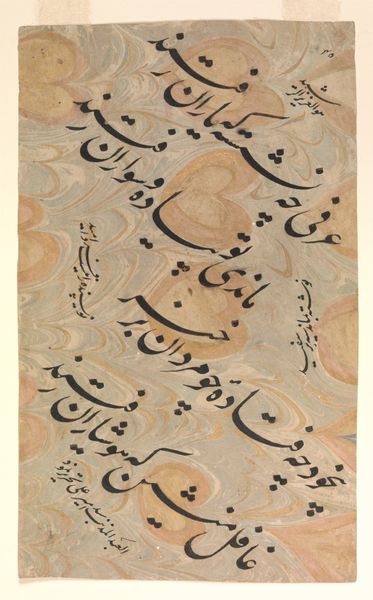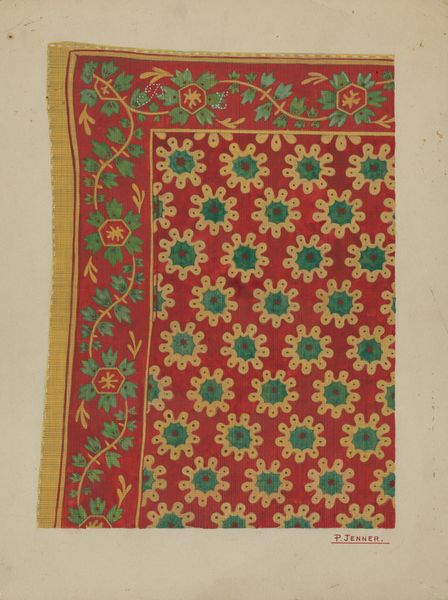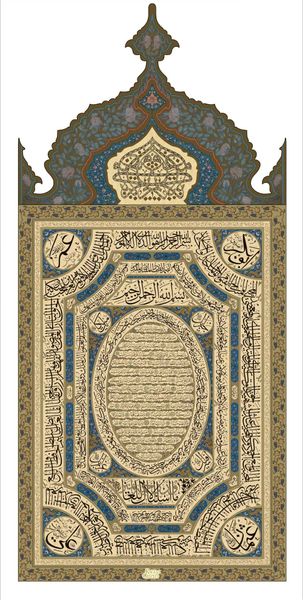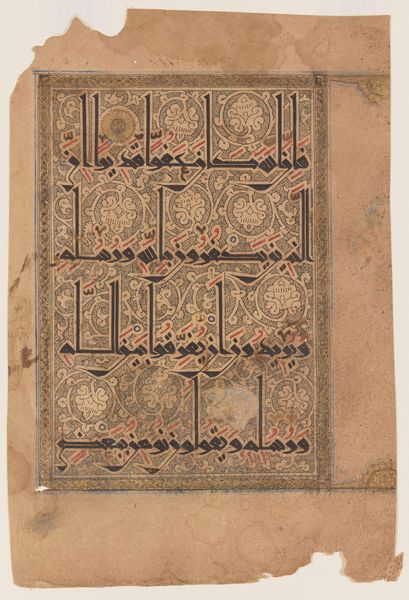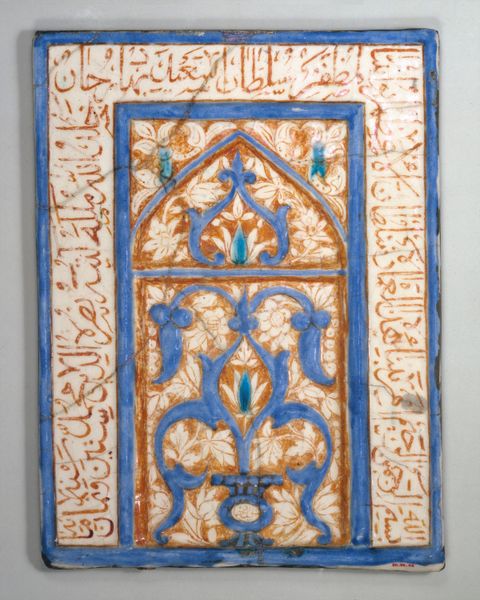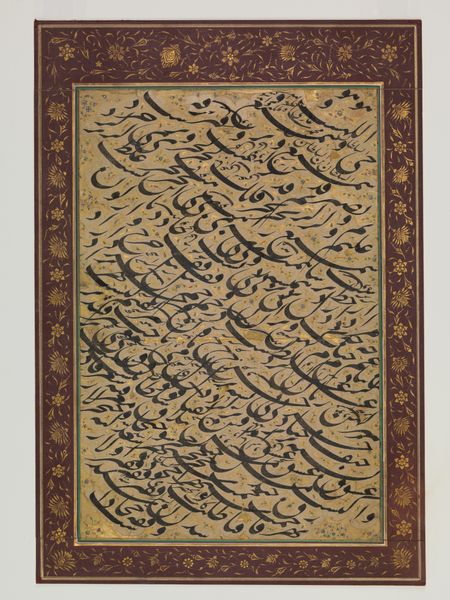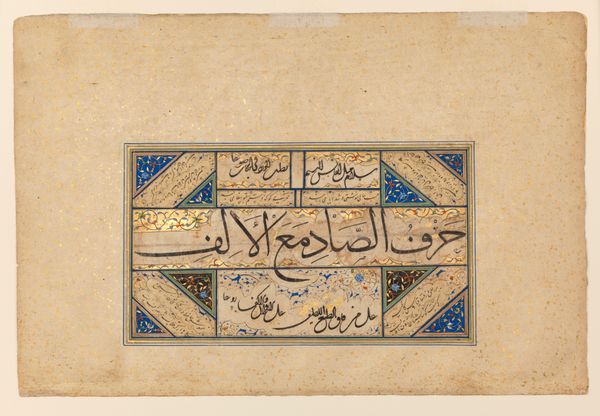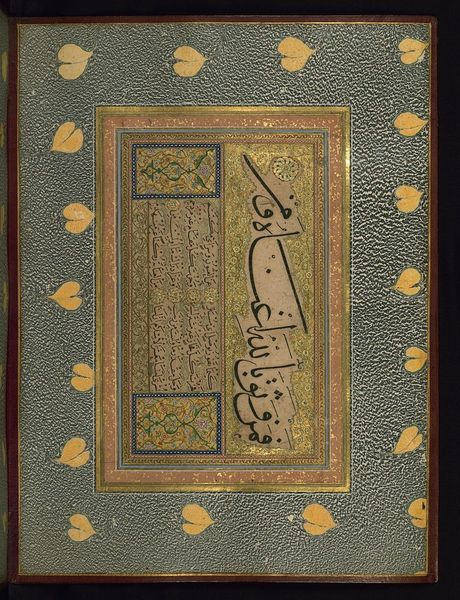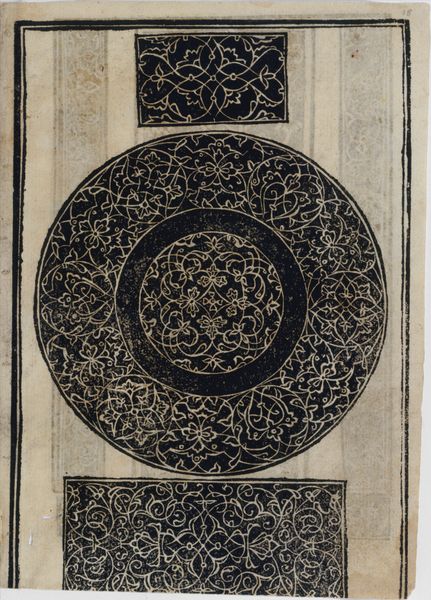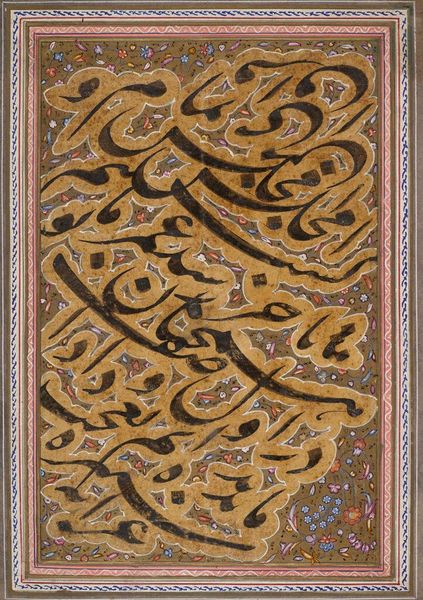
silk, textile
#
silk
#
textile
#
abstract
#
form
#
organic pattern
#
islamic-art
#
decorative-art
#
calligraphy
Dimensions: Textile: L. 70 1/2 in. (179.1 cm) W. 35 in. (88.9 cm) Mount: H. 73 3/4 in. (187.3 cm) W. 42 1/2 in. (108 cm) D. 7/8 in. (2.2 cm) Wt. 53 lbs. (24 kg)
Copyright: Public Domain
Editor: Here we have the Inscribed Banner, dating roughly from 1670 to 1721, created by Isma'il Kashani. It's crafted from silk, so, a textile piece. The banner has this unique triangular shape filled with intricate patterns and calligraphy. It strikes me as incredibly decorative, almost overwhelming in its detail. What do you make of its overall composition? Curator: Indeed, its triangular format immediately compels us to consider the implied lines and the direction of the gaze it constructs. Note how the calligraphy dominates, a complex interplay of forms asserting its visual authority. The organic patterns surrounding it serve as a textural counterpoint. Do you observe any particular rhythms or repetitions in those surrounding floral arabesques? Editor: I do notice how the pink floral pattern seems to echo some of the curved lines within the script, as if there's an attempt to create harmony through repeated shapes. But the script itself almost looks woven, not just painted on, but integrated into the material. Is this just the effect of how meticulously it has been made? Curator: Precisely. The very act of inscribing upon silk introduces a tension. The silk’s inherent fragility clashes with the permanence implied by the inscription. The script is paramount here and dictates every spatial configuration on the triangular form. It guides how we look at the surface, from large shapes to tiny features. What feeling emanates from the density of these overlaid structures? Editor: It's imposing, really. A bit intimidating, even. All of that interwoven forms command attention. I find the use of gold for the main inscription especially compelling. Curator: It signifies value, certainly, adding weight to the words but notice how all those colors— blues, reds, golds, and greens—exist independently from each other and are placed very thoughtfully within this artwork. This isn't merely decoration. Each formal element contributes to a sophisticated whole. Editor: I'm starting to appreciate how it all contributes to a holistic artistic statement, one of considered aesthetic intention. The use of different colors and organic shapes work in conjunction with the inscriptions, making this far more sophisticated than initially seems.
Comments
No comments
Be the first to comment and join the conversation on the ultimate creative platform.
